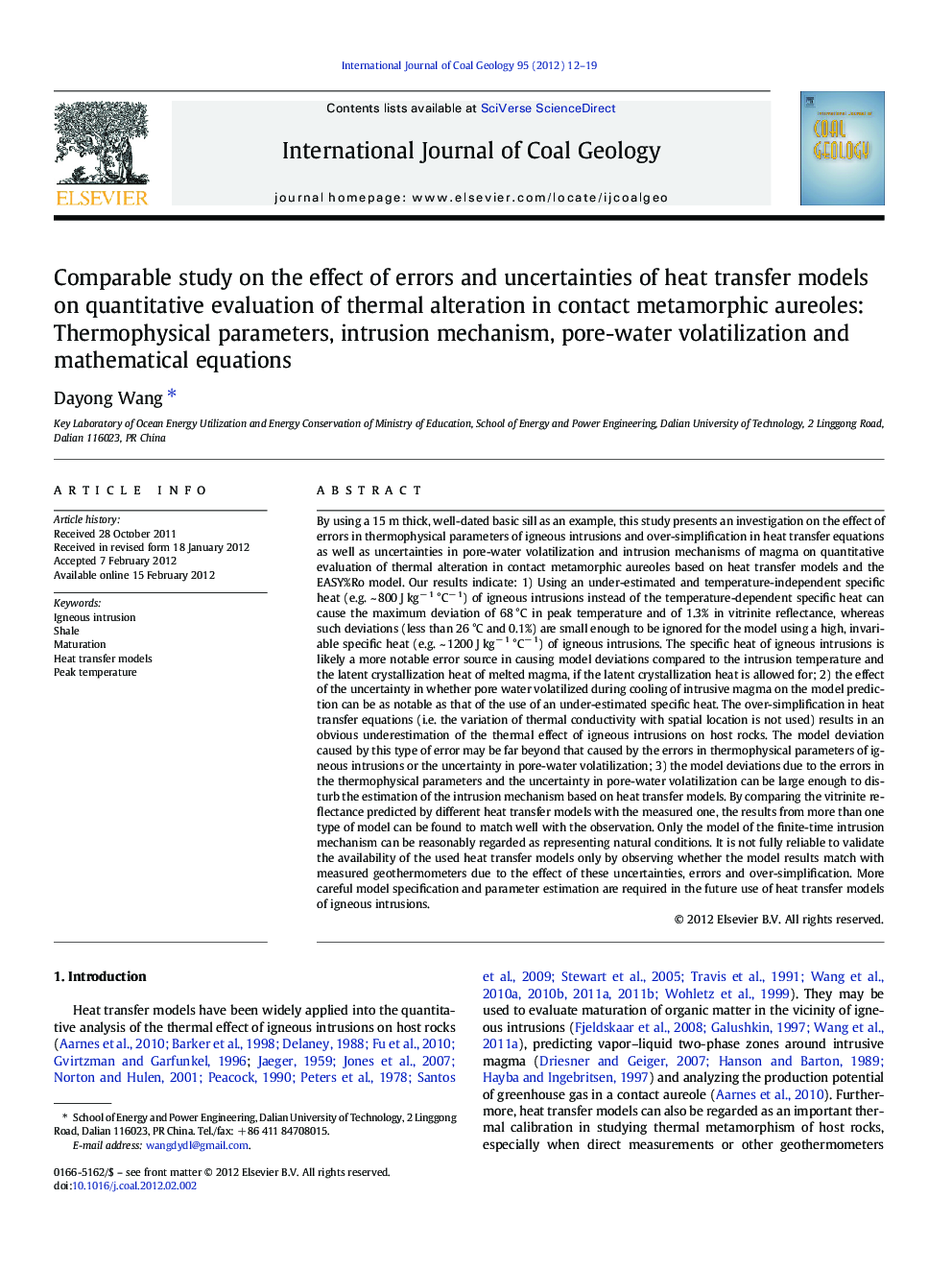| کد مقاله | کد نشریه | سال انتشار | مقاله انگلیسی | نسخه تمام متن |
|---|---|---|---|---|
| 1753367 | 1522598 | 2012 | 8 صفحه PDF | دانلود رایگان |

By using a 15 m thick, well-dated basic sill as an example, this study presents an investigation on the effect of errors in thermophysical parameters of igneous intrusions and over-simplification in heat transfer equations as well as uncertainties in pore-water volatilization and intrusion mechanisms of magma on quantitative evaluation of thermal alteration in contact metamorphic aureoles based on heat transfer models and the EASY%Ro model. Our results indicate: 1) Using an under-estimated and temperature-independent specific heat (e.g. ~ 800 J kg− 1 °C− 1) of igneous intrusions instead of the temperature-dependent specific heat can cause the maximum deviation of 68 °C in peak temperature and of 1.3% in vitrinite reflectance, whereas such deviations (less than 26 °C and 0.1%) are small enough to be ignored for the model using a high, invariable specific heat (e.g. ~ 1200 J kg− 1 °C− 1) of igneous intrusions. The specific heat of igneous intrusions is likely a more notable error source in causing model deviations compared to the intrusion temperature and the latent crystallization heat of melted magma, if the latent crystallization heat is allowed for; 2) the effect of the uncertainty in whether pore water volatilized during cooling of intrusive magma on the model prediction can be as notable as that of the use of an under-estimated specific heat. The over-simplification in heat transfer equations (i.e. the variation of thermal conductivity with spatial location is not used) results in an obvious underestimation of the thermal effect of igneous intrusions on host rocks. The model deviation caused by this type of error may be far beyond that caused by the errors in thermophysical parameters of igneous intrusions or the uncertainty in pore-water volatilization; 3) the model deviations due to the errors in the thermophysical parameters and the uncertainty in pore-water volatilization can be large enough to disturb the estimation of the intrusion mechanism based on heat transfer models. By comparing the vitrinite reflectance predicted by different heat transfer models with the measured one, the results from more than one type of model can be found to match well with the observation. Only the model of the finite-time intrusion mechanism can be reasonably regarded as representing natural conditions. It is not fully reliable to validate the availability of the used heat transfer models only by observing whether the model results match with measured geothermometers due to the effect of these uncertainties, errors and over-simplification. More careful model specification and parameter estimation are required in the future use of heat transfer models of igneous intrusions.
► The effect of model errors and uncertainties is systematically quantified.
► Parameter errors disturb estimation of volatilization and intrusion mechanism.
► Oversimplified equation has a bigger effect than other errors and uncertainties.
Journal: International Journal of Coal Geology - Volume 95, 1 June 2012, Pages 12–19